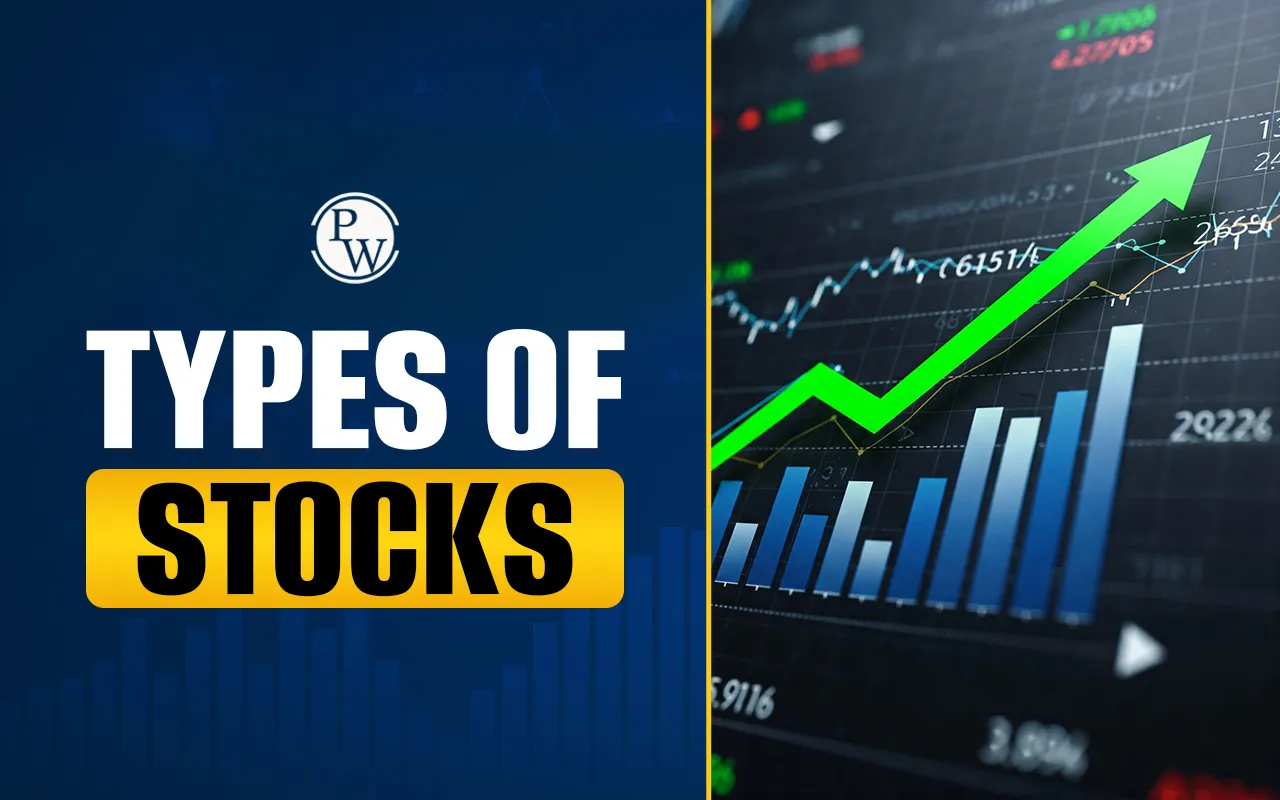

Types of Stocks: An investment in stocks, which represent fractional ownership in a company is a fundamental way to participate in the financial markets and build wealth. However the world of equities is far from monolithic; stocks are broadly and narrowly categorized in a multitude of ways.
Understanding these different types of stocks is important for any investor as each category carries a unique risk-reward profile, caters to different financial goals and responds distinctively to economic shifts.
Whether they are classified by ownership rights, company size, or investment style knowing these classifications is the key to constructing a well-diversified portfolio that suits one personal objectives and risk tolerance.
What is Stock?
Imagine a popular company, like a candy maker. To grow, this company needs money. One way to get funds is by selling small pieces of its ownership to the public. Each small piece of ownership is called a stock or a share. When you buy a stock, you become a tiny owner of that company. If the company does well and earns more money, the value of your share often goes up. If you sell it later you make a profit. That is how people earn money from stocks.
Different Types of Stocks
The world of shares is not just one size fits all. Companies issue different types of stocks. Each category has its own features. Knowing these differences helps investors make smart choices. Let is look at the main categories and five important types.
5 Types of Stocks
Stocks can be categorized in many ways, but here are five key types that are important for every investor to understand, as they represent different risk and reward profiles:
|
5 Types of Stocks |
|||
|
Stock Type |
Primary Characteristic |
What it Means for You |
Example Industries |
|
1. Growth Stocks |
Issued by companies expected to grow sales and earnings at a faster rate than the market average. |
High Risk, High Reward. These companies often reinvest all profits back into the business, so they rarely pay dividends. Your return comes from the stock price increasing (capital appreciation). |
Technology, Biotechnology, Emerging Sectors. |
|
2. Value Stocks |
Shares that appear to be trading at a price lower than their intrinsic value often due to a temporary problem or simply being overlooked by the market. |
Moderate Risk. Investors seek these out as bargains hoping the market will eventually recognize their true worth, causing the stock price to rise. |
Manufacturing, Energy, Mature Retail. |
|
3. Income/Dividend Stocks |
Issued by well-established, financially stable companies that pay out a regular portion of their earnings to shareholders as dividends. |
Lower Risk, Steady Income. These are favored by investors looking for a consistent, reliable cash flow, often used by retirees. |
Utilities, Telecommunications, Real Estate Trusts (REITs). |
|
4. Blue-Chip Stocks |
Shares of nationally recognized, well-established, and financially sound companies with a long history of stable earnings and consistent dividend payments. |
Lowest Risk (relative to other stocks). These are considered safe haven stocks and often represent the largest, most dominant firms in their sector. |
Large-Cap Banks, Major Consumer Goods, Global Pharma. |
|
5. Cyclical Stocks |
Stocks whose performance is closely tied to the overall economic cycle. They do well when the economy is strong and poorly during recessions. |
High Volatility. These stocks offer great returns during economic booms but can see sharp declines during downturns. |
Airlines, Hotels, Luxury Goods, Automobile Manufacturers. |
Types of Trading in Stock Market
Buying and selling shares is called trading. People trade in different ways based on how long they plan to hold the stock.
-
Intraday Trading: This is the fastest type. Intraday traders buy and sell a stock within the exact same day. They try to make small profits from very small changes in the share price during the market hours. They hold nothing overnight.
-
Swing Trading: This method takes a bit longer. Swing traders buy a share and hold it for a few days or sometimes a few weeks. They aim to profit from an expected up or down swing in the stock price movement.
-
Delivery Trading: This is the slowest approach. Delivery traders buy shares and plan to hold them for a long time. This can be months or even many years. They believe the company value will grow strongly over a long period. They take delivery of the shares in their investment account.
Understanding the basic concepts like what a stock is and the different types of stocks is the first step toward financial knowledge. The stock market offers various ways to invest from the stability of a blue-chip stock to the quick action of intraday trading. If you want to learn more, a strong education is key. We recommend checking out the courses offered by PW Stock Market for Beginners Courses . Their programs break down complex finance topics into simple, easy-to-follow lessons. Start your learning journey with PW today.
